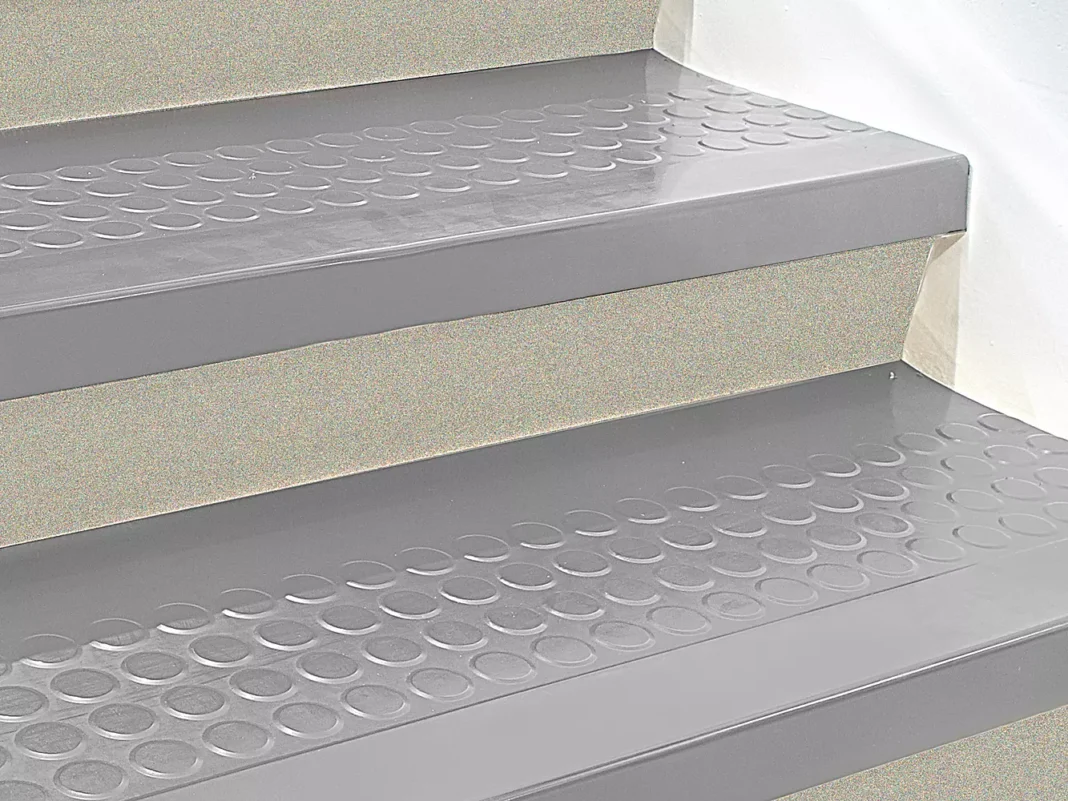The material used for Stair Treads are very important for both safety and aesthetics. Staircases see a lot of daily traffic and stair tread materials will endure plenty of wear over the years. Choosing the right material is key to creating a staircase that remains slip-resistant, long-lasting, and attractive throughout its lifespan.
Slippery or worn stair tread materials can pose serious safety hazards as they degrade. The best materials for durable and attractive stair treads will provide optimal traction even after years of use. At the same time, materials that quickly become scuffed or damaged-looking can ruin the intended interior design style of a home. Factors like these make it important for homeowners to research their options and select high-quality, suitable materials.
Wood Stair Treads
Wood remains an extremely popular choice for residential staircases thanks to its natural aesthetic appeal and durability when properly maintained. Some prime hardwood options include oak and maple, while softwood pine is more affordable.
Pros
- Enhances warmth and character of wooden homes
- Hugs contours of stairs better than alternatives
- Easily refinished to like-new luster
Cons
- Dents or gouges show more prominently
- Needs periodic sanding and re-staining
- Softwood varieties don’t last as long
Carpeted Stair Treads
Carpeted Stair Tread Covers are an excellent option for providing traction on steps. While carpet may not last as long as harder materials like wood or tile, it does offer safety benefits that make it a worthwhile choice for many homeowners.
Carpet gives stair treads a softer, more comfortable feel underfoot. The plush fibers grip shoe soles nicely to prevent slips. This is especially important for stairs, as a slip could result in a dangerous fall. Carpet provides insurance against such accidents.
When choosing a carpet, consider the pile height and fiber type. Higher pile carpets like berber or cut pile loop will have better traction for stairs than low-pile textured varieties. Nylon and polyester fibers are more durable options that will maintain their texture for longer. Wool is incredibly soft underfoot but requires more maintenance.
Tile and stone Stair Treads
Tile and stone materials like ceramic, porcelain, and natural stone are popular choices for hardwearing stair treads thanks to their durability and variety of aesthetic options.
Some of the most popular tile and stone types suitable for stairs include ceramic floor tile, porcelain tile, marble, granite, slate, and limestone. Ceramic and porcelain are very durable and suitable for high-traffic areas. Though not as natural-looking as stone, they provide excellent resistance to stains, scuffs and cracking.
Rubber and other synthetic materials
Rubber and other synthetic materials have gained popularity in recent years for durable, low-maintenance stair treads. Some common options include durarubber, thermoplastic elastomers (TPE), and polyvinyl chloride (PVC).
These materials reproduce the look of natural wood, stone or tile, but have enhanced characteristics like slip-resistance and noise reduction. They also resist water damage, stains, and cracking better than organic materials. Tread profiles can be customized with natural graining or other aesthetics as well.
Compared to maintenance needs of real wood and stone, rubber and synthetic treads are quite low-effort. Effortless cleaning with soap and water is usually all that’s required. As closed-cell materials, they don’t harbor odors, mold or pests like carpet can.
Choosing quality Stair Treads materials
When choosing materials for stair treads, it’s important to weigh factors like budget, aesthetics, durability, safety, and maintenance needs. Here are some tips for selecting quality options:
- Consider your project budget. Materials like hardwood, marble, and carpet will generally be more expensive up front versus tile, rubber, or laminate.
- Inspect samples in store lighting versus online to compare true colors and textures. Ensure the style matches your home’s interior.
- Ask suppliers about expected lifespans. Hardier materials like tile and metal last 50+ years typically. Others need replacement every 10-15 years.
- Review independent product ratings and warranties for durability claims. Composite materials often score well for withstanding wear.
- Check non-slip certifications. Look for wet/dry PTV ratings of ≥36 for interior stairs per building codes.
- Interviews multiple contractors for estimates. Reputable installers ensure proper techniques for the long run.
- Consider resale value. Materials like natural stone or hardwood tend to retain value better for future home sellers.
Proper installation and maintenance is key
Properly installing and caring for stair tread materials over the long term is vital to safety, performance and aesthetic longevity. Here are some best practices:
Installation
Use professional installers with experience specific to stairs. Improper installation can void warranties or cause failures. Reinforce all seams and attachments securely through metal nosing or brackets.
Surface Protection
For natural materials like wood, apply recommended polyurethane or wax to create a protective barrier from damage. Reapply annually as needed.
Routine Cleaning
Sweep, vacuum or mop stair treads weekly to prevent dirt buildup. Mix warm water with gentle cleaner or vinegar for hard surfaces as needed.
Daily Inspection
Check for fraying, dents or surface deterioration that could affect safety. Address wear promptly before dangerous slip hazards develop.
Replacement Schedule
Expect to refurbish softer materials like carpet every 7-10 years. Inspect harder surfaces at 10-15 year intervals minimum for recoating, refinishing or rebuilding as needed.
Maintenance Calendar
Note cleaning/reapplication due dates on a calendar to maintain long term appeal and performance without overlooking routine care.
Safety First
Replace treads immediately if excessively worn to preserve traction. Contact manufacturers if warranty issues arise due to defective materials or workmanship over time.
Also Read: https://mstravaloo.com/







